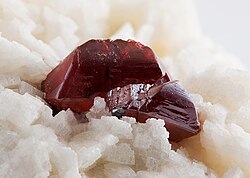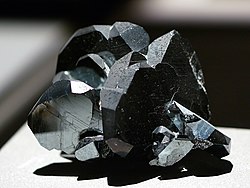A








- Abellaite
- Abelsonite
- Abenakiite-(Ce)
- Abernathyite
- Abhurite
- Abramovite
- Abswurmbachite
- Abuite
- Acanthite
- Acetamide
- Achalaite
- Achávalite
- Actinolite
- Acuminite
- Adamite
- Adamsite-(Y)
- Adelite
- Admontite
- Adranosite
- Aegirine
- Aegirine-augite
- Aenigmatite
- Aerinite
- Aerugite
- Aeschynite-(Ce)
- Aeschynite-(Nd)
- Aeschynite-(Y)
- Afghanite
- Afmite
- Afwillite
- Agardite
- Agate
- Agrellite
- Agrinierite
- Aguilarite
- Aheylite
- Ahlfeldite
- Aikinite
- Aiolosite
- Ajoite
- Akaganéite
- Akaogiite
- Akasakaite-(Ce)
- Akasakaite-(La)
- Akatoreite
- Akdalaite
- Åkermanite
- Akhtenskite
- Akimotoite
- Akrochordite
- Aksaite
- Aktashite
- Alabandite
- Alacránite
- Alamosite
- Alarsite
- Albite
- Albrechtschraufite
- Alcantarillaite
- Aldermanite
- Aleksite
- Aleutite
- Alforsite
- Algodonite
- Aliettite
- Allabogdanite
- Allactite
- Allanite
- Allanpringite
- Allantoin
- Allargentum
- Alleghanyite
- Allendeite
- Alloclasite
- Allophane
- Alloriite
- Alluaivite
- Alluaudite
- Almandine
- Almarudite
- Alpeite
- Alpersite
- Alsakharovite-Zn
- Alstonite
- Altaite
- Alterite
- Althausite
- Althupite
- Altisite
- Alum-(K)
- Alum-(Na)
- Aluminite
- Aluminium
- Aluminoceladonite
- Aluminocopiapite
- Aluminosilicate
- Alumohydrocalcite
- Alunite
- Alunogen
- Alvanite
- Amakinite
- Amarantite
- Amblygonite
- Ameghinite
- Amesite
- Amicite
- Aminoffite
- Ammineite
- Amphibole (mineral group)
- Analcime (analcite)
- Anandite
- Anapaite
- Anatase
- Ancylite (mineral group)
- Andalusite
- Andersonite
- Andesine
- Andorite (IV/VI)
- Andradite
- Andreybulakhite
- Andrianovite
- Andychristyite
- Andyrobertsite
- Anglesite
- Anhydrite
- Anilite
- Ankerite
- Annabergite
- Annite
- Anorthite
- Anorthoclase
- Antarcticite
- Anthoinite
- Anthonyite
- Anthophyllite
- Antigorite
- Antimonselite
- Antimony
- Antipinite
- Antitaenite
- Antlerite
- Anzaite-(Ce)
- Apachite
- Apatite (mineral group)
- Aphthitalite
- Apjohnite
- Aplowite
- Apophyllite
- Apuanite
- Aqualite
- Aradite
- Aragonite
- Arakiite
- Aramayoite
- Arcanite
- Archerite
- Arctite
- Arcubisite
- Ardaite
- Arfvedsonite
- Argentite
- Argentobaumhauerite
- Argentojarosite
- Argentopyrite
- Argutite
- Argyrodite
- Arhbarite
- Armalcolite
- Armstrongite
- Arsendescloizite
- Arsenic
- Arseniosiderite
- Arsenoclasite
- Arsenolite
- Arsenopyrite
- Arsenuranospathite
- Arthurite
- Artinite
- Artroeite
- Asbecasite
- Asbolane
- Aschamalmite
- Ashburtonite
- Ashcroftine-(Y)
- Ashoverite
- Asisite
- Aspedamite
- Aspidolite
- Astrocyanite-(Ce)
- Astrophyllite
- Atacamite
- Atelestite
- Atencioite
- Athabascaite
- Atheneite
- Attikaite
- Aubertite
- Augelite
- Augite
- Aurichalcite
- Auricupride
- Auropolybasite
- Aurorite
- Aurostibite
- Austinite
- Autunite
- Avicennite
- Avogadrite
- Awaruite
- Axinite (mineral group)
- Azoproite
- Azurite
- Varieties that are not valid species:
- Adamantine spar (variety of corundum)
- Agate (variety of chalcedony and quartz)
- Alabaster (variety of gypsum)
- Alexandrite (variety of chrysoberyl)
- Allingite (synonym of amber)
- Alum
- Amazonite (variety of microcline)
- Amethyst (purple variety of quartz)
- Ametrine (variety of quartz)
- Ammolite (organic; also a gemstone)
- Amosite (asbestiform grunerite)
- Antozonite (variety of fluorite)
- Anyolite (metamorphic rock - zoisite, ruby, and hornblende)
- Aquamarine (light blue variety of beryl)
- Argentite (high temperature form of acanthite)
- Asbestos (fibrous serpentine- or amphibole minerals)
- Auerlite (variety of thorite)
- Avalite (chromian variety of illite)
- Aventurine (variety of quartz)
























































